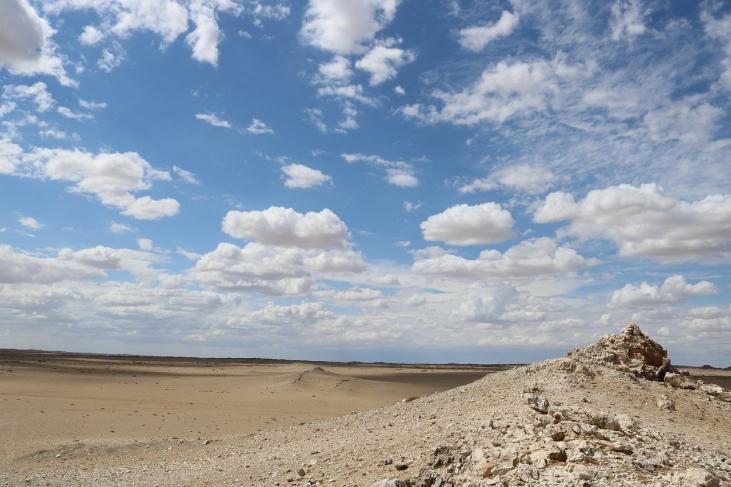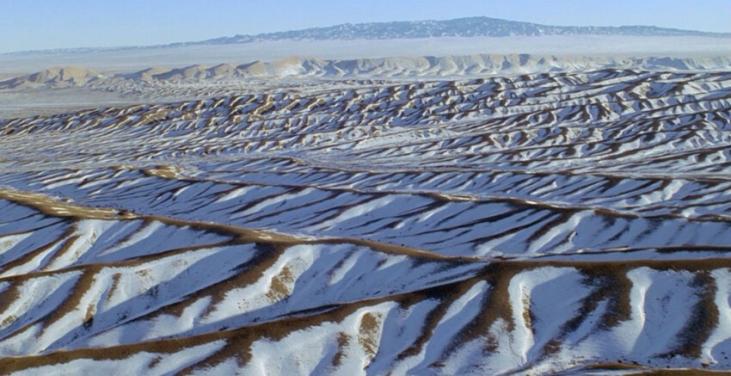Cold desert under the shadow of rains - Gobi

The Gobi Desert is the sixth largest desert in the world and the second largest in Asia.
Aigul Kanatbekovna
The desert is bounded by the Altai Mountains, the grasslands and steppes of Mongolia to the north, the Taklamakan Desert to the west, the Hexi Corridor and Tibetan Plateau to the southwest, and the North China Plain to the southeast.
The Gobi is a rain shadow desert - a dry area on the leeward side of a mountainous area. Mountains block the passage of rainy weather systems and cast behind them a “shadow” of dryness. Wind and moist air is drawn by prevailing winds to the top of the mountains, where it condenses and precipitates before crossing the summit. Air without any remaining moisture moves through the mountains, creating a drier side called the “rain shadow.”

With frost and occasional snow on its dunes...
The Gobi was formed on the Tibetan Plateau due to the Himalayas, which blocked rainfall from the Indian Ocean to the Gobi territory. The Gobi is a generally cold desert, with frost and occasional snow on its dunes. Yes, if you didn’t know, the desert is not always hot, it can also be cold.
Most of the Gobi is not sandy desert, but bare rock. You can drive a car on this surface for long distances in any direction, since such a surface is hard. The Gobi is often portrayed as a place of unbearable heat and lifeless sand dunes, similar to the inhospitable and almost uninhabited Sahara Desert. However, in reality the opposite is true. The Gobi has high mountains, forests, lakes and steppes in places. But of course there is sand and sand dunes.

